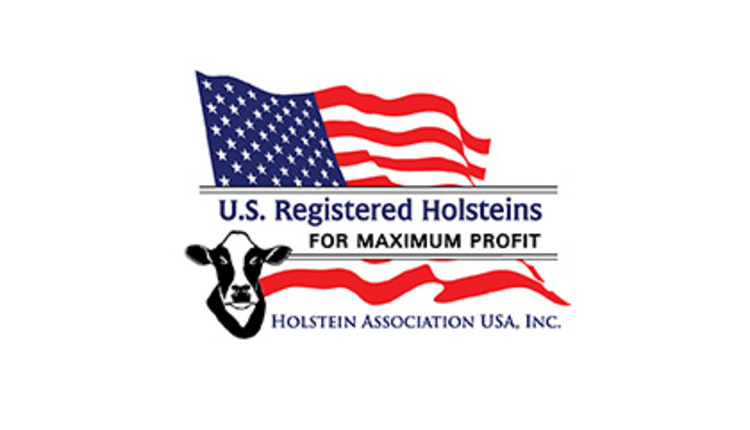
Choosing the right vaccination program for cows is a fundamental aspect of the health and profitability of any dairy operation. Incorporating killed vaccines during mid to late gestation has been shown to be beneficial for both the cow and her future calf, in addition to using modified-live virus (MLV) vaccines prior to breeding.1
“Killed vaccines do a really good job of boosting an animal's preexisting immune response from an MLV vaccine program,” said Chris Chase, DVM, professor, Department of Veterinary and Biomedical Sciences, South Dakota State University.
“When timed correctly and under the guidance of a herd veterinarian, using MLV and killed vaccines in a herd health protocol can help further reduce respiratory and reproductive diseases, as well as improve profitability,” said Linda Tikofsky, DVM, senior associate director of dairy professional veterinary services, Boehringer Ingelheim.
For cows, it’s recommended to administer an MLV vaccine at pre-breeding around 30 to 40 days in milk. Ideally, dairy replacement heifers should receive a minimum of three MLV vaccines with the third dose given 30 days prior to breeding. Giving a killed vaccine during mid to late gestation offers five main benefits:
1. Safe to use for all ages and stages. Killed vaccines are safe for pregnant cows regardless of their vaccination history.1 “If the health and vaccination history of a pregnant female is unknown, do not use MLV vaccines since a cow that has not been previously immunized with an MLV vaccine may abort,” said Dr. Tikofsky.
2. No reversion to virulence. Reversion to virulence means a vaccine has the potential to cause disease in immunosuppressed animals. Although the risk is extremely low, MLV vaccines do carry this risk.
3. Stability in storage and handling. Killed vaccines offer a long storage life and are also ready to use — no mixing required.1
4. Fortified colostrum. “Giving a killed vaccine at dry off can boost colostral antibody levels,” Dr. Chase said.2 “If the colostrum is managed correctly, we can provide additional protective respiratory immunity for the calf.”
5. A positive synergy between killed and MLV vaccines when used together. Research has shown that MLV and killed vaccines can enhance one another when used in herd health protocols. Giving a killed vaccine in late gestation followed by an MLV vaccine at 30 to 40 days in milk pre-breeding may help improve breeding efficiency.3
Killed vaccines also offer a longer duration of protection than we may have originally thought. “The quality of adjuvants has greatly improved in killed vaccines, which changes the character of the immune response animals have,” explained Dr. Chase. “Rather than being short-lived, killed vaccines now last much longer. A recent study has shown a solid 12 months of protection from killed vaccines, whereas before they were thought to only last three to four months.”4
“If you decide to incorporate a killed vaccine into your protocol, make sure the one you choose provides proven protection against bovine viral diarrhea virus Types 1 and 2, infectious bovine rhinotracheitis, bovine respiratory syncytial virus and parainfluenza-3,” advised Dr. Tikofsky.
When using killed vaccines for the first time, it’s important to give two doses of the vaccine according to label directions. Failure to follow-up with a second dose within the correct time frame is one of the most common reasons a killed vaccine can fail.1
Drs. Tikofsky and Chase encourage producers to work with their veterinarians for guidance. They can help develop a vaccination program tailored to fit the needs of the herd.
References:.
1 New York State Cattle Health Assurance Program Expansion Module. Vaccination strategies to maximize preventive health and to minimize adverse effects on market quality. Available at: https://ahdc.vet.cornell.edu/programs/NYSCHAP/docs/vacc_facts111.pdf. Accessed Nov. 14, 2018.
2 Smith BI, Rieger RH, Dickens CM, Schultz RD, Aceto H. Anti-bovine herpesvirus and anti-bovine viral diarrhea virus antibody responses in pregnant Holstein dairy cattle following administration of a multivalent killed virus vaccine. Am J Vet Res 2015; 76:913–920
3 Dubovi EJ, Gröhn YT, Brunner MA, Hertl JA. Response to modified-live and killed multivalent viral vaccines in regularly vaccinated, fresh dairy cows. Vet Ther 2000;1(1):49–58.)
4 Walz PH, Givens MD, Rodning SP, et al. Evaluation of reproductive protection against bovine viral diarrhea virus and bovine herpesvirus-1 afforded by annual revaccination with modified-live viral or combination modified-live/killed viral vaccines after primary vaccination with modified-live viral vaccine. Vaccine 2017; 35:1046–1054.
Improving the health and quality of life of patients is the goal of the research-driven pharmaceutical company Boehringer Ingelheim. The focus in doing so is on diseases for which no satisfactory treatment option exists to date. The company therefore concentrates on developing innovative therapies that can extend patients’ lives. In animal health, Boehringer Ingelheim stands for advanced prevention.
Family-owned since it was established in 1885, Boehringer Ingelheim is one of the pharmaceutical industry’s top 20 companies. Some 50,000 employees create value through innovation daily for the three business areas human pharmaceuticals, animal health and biopharmaceuticals. In 2017, Boehringer Ingelheim achieved net sales of nearly 18.1 billion euros. R&D expenditure, exceeding three billion euros, corresponded to 17.0 percent of net sales.
As a family-owned company, Boehringer Ingelheim plans in generations and focuses on long-term success rather than short-term profit. The company therefore aims at organic growth from its own resources, with simultaneous openness to partnerships and strategic alliances in research. In everything it does, Boehringer Ingelheim naturally adopts responsibility toward mankind and the environment.
More information about Boehringer Ingelheim can be found at www.boehringer-ingelheim.com or in our annual report: http://annualreport.boehringer-ingelheim.com.
About Boehringer Ingelheim Animal Health
Boehringer Ingelheim is the second largest animal health business in the world. We are committed to creating animal wellbeing through our large portfolio of advanced, preventive healthcare products and services. With net sales in 2017 of 3.9 billion euros ($4.4 billion) and around 10,000 employees worldwide, we are present in more than 150 markets. For more information, visit here: https://www.boehringer-ingelheim.com/animal-health/overview.


